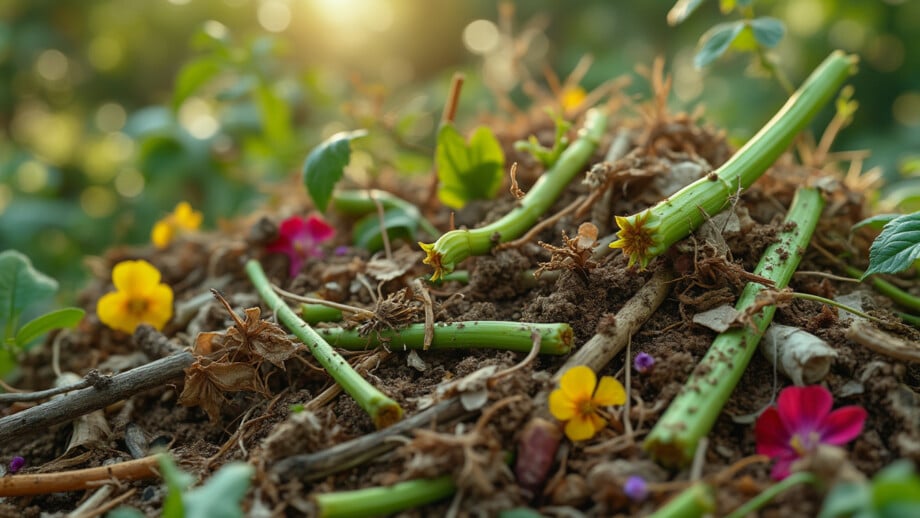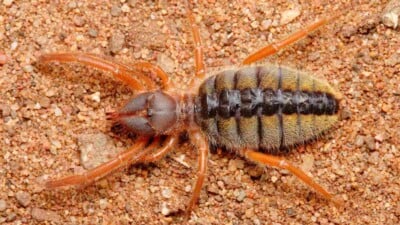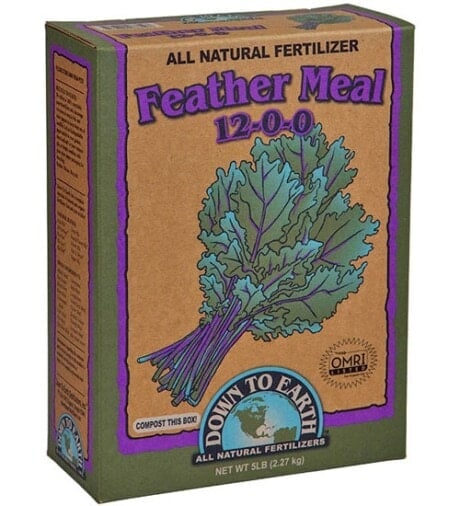Extras & Additives


Best product
for a Hot Pile
Compost Maker
A proprietary blend of microorganisms used to break down kitchen and yard waste.
$9.95Learn moreCompost starters are perfect to speed up the natural decomposition process when you’re home composting to transform your food waste, kitchen scraps, and yard waste into healthy, fertile humus soil.
If you’re reading this, you’re one of the many of us that want to try composting but maybe don’t have the patience to wait out the natural composting period that could take months to finish.
Sometimes the delay is because nature takes time, other times it’s because of a lack of proper mixture in your composting pile.
Regardless of the reason, compost starters can get you great results fast. In this article, learn exactly what they are, which ingredients to look out for, and our top picks for compost starters in 2022.
What is a Compost Starter?
A compost starter, as the name suggests, is anything that helps begin the composting process or even accelerates the natural decomposition process.
It includes organic matter that you can add to your compost tumbler or bin to get started with the whole process to get gardener’s black gold.
They are also known as ‘compost activators’ or ‘compost accelerators’, and are mainly composed of bacteria and fungi that help kickstart the decomposition process.
During the process of decomposition, there are a lot of biological activities going on. It is more than just the grass and leaves dying and includes the bacteria working round-the-clock to break down organic materials.
And so, a good quality compost starter will contain ingredients that are rich in nitrogen, carbon, and microorganisms. They will include pH balancers and millions of microbes to help the process accelerate.
Do You Need a Compost Starter?
A compost starter isn’t necessary if you get the proper balance of greens and browns. But if it’s hard for you to achieve the right balance of organic matter, air, and water, an activator can be very helpful.
Given sufficient time, every organic matter will eventually decompose. But if you want faster results, you must properly balance the four basic composting elements: green materials, brown matter, water, and oxygen.
The goal is to create the most ideal conditions possible for microbial activity to develop quickly and to let the microorganisms do their jobs. But, unfortunately, oftentimes this is when things get complicated!
Balancing nitrogen-rich ‘greens’ with carbon-rich ‘browns’ can be difficult for most of us. Green materials include things like grass clippings, food scraps, and green leaf prunings. Brown matter is typically drier materials such as twigs, branches, or dried leaves.
We either have too much or too little of each sort of ingredient at various times of the year. However, the absence of elements rich in nitrogen can slow down the decomposition process.
During the composting process, microbes require a high-energy food source, which can be provided by greens that are rich in nitrogen. They can’t do their job if they don’t have enough nitrogen.
In most cases, this is what ultimately results in the requirement for some form of compost starter. Most of the time, these activators are high in nitrogen. Adding them to your compost feeds the bacteria and brings the system back into balance, giving you black gold that your garden will thank you for.
When Else to Use Compost Starters:
Apart from a lack of nitrogen, other situations where you may require a compost starter is when there is a limited water supply, air supply, microorganisms, or carbon-rich materials.
Understanding Compost Starters by Ingredients
Compost starters, as we explained above, can help speed up the natural decomposition process. But to understand which one is the right one for your compost pile, let’s look at different options we have by ingredients:
Nitrogen
Since most piles are short on nitrogen, not carbon, adding nitrogen will generally help a pile heat up quickly. But if the pile starts smelling like ammonia, you know you’ve gone too far.
Quick-fix nitrogen sources include blood meal, soybean meal, alfalfa meal pellets, and manures, especially chicken manure.
Sprinkle, don’t dump, one of these here and there in the pile as it accumulates. Doing so is one way to get a continuous pile to heat up.
Oxygen
Placing a palette in the bottom of a compost bin, or simply starting the pile with several inches of sticks or heavy-duty stems, will lift the pile off the ground and provide continuous air flow.
Doing this, however, removes the compost from what’s often the primary source of microbes, the dirt underneath it. It’s a good idea, therefore, to provide an alternative source of microbes for piles built off the ground, if only by sprinkling them with the occasional half-inch of dirt.
Oxygen can also be supplied by building a pile around perforated pipes that reach all the way to the sides or to the top of the pile. There’s some dispute in the composting world about how well such systems work.
Turning, however, is the time-honored method of providing oxygen to a pile.
Micro-Organisms
Since it’s the microorganisms that do the bulk of the work in an active pile, adding extras will hurry the process along.
Most organic gardening stores carry boxed dormant microorganisms. Dig down a layer or two, and sprinkle some of the dry mix into the damp center of the pile, in several different places. If you put it on top, be sure to water it in as it won’t become active until damp.

100% NATURAL & ORGANIC
Compost Starter
Includes the microbes needed to speed up the decomposition of raw organic materials.
$9.95Learn moreDr. Earth Compost Starter includes the necessary microorganisms for digesting organic materials — produces a great finished compost. It is suitable for composting leaves, straws, manures, grass clippings, food scraps, and other organic matter.
Shredders
Smaller pieces provide more surface area for the micro-organisms to attack. If you chop, shred, or grind your compostable materials before adding them to the pile, you in effect do some of the beasties’ work for them, which saves time.
Some people toss the day’s compost into a food processor or grinder; some use a paper shredder on newsprint and office paper; some use chippers or a machete on twigs and branches; some use a mulching lawn mower to shred leaves and other compostables.
Compost Ingredients That are Not Recommended
Lime
Some people include lime in their compost to raise pH. Immature compost can indeed be quite acidic — the process produces many acids — but by the time it is fully mature, its pH is about 6.5, which is ideal for most plants.
Adding agricultural lime can harm some of the microorganisms that create compost, and unbalance the complicated chemistry. The early, acidic phase, for instance, plays an important role in killing dangerous pathogens.
It’s best to adjust compost pH after the composting process is finished, but if your starting mix has a pH of 5 or below, you can add lime.
Wood Ash
Wood ash can be a valuable soil amendment for acidic soils, especially if you’re getting it free: it contains phosphorus (.8-3%,) potassium (2.8-8.6%), and calcium (14-28 %), as well as magnesium, sulfur, and boron. Some people figure they’ll just toss the ashes in the compost and save themselves the trouble of dealing with two separate amendments.
However, adding ash to an open compost pile doesn’t work well because its nutrients easily leach away. This is due in part to its chemistry and, in part, to the small size of its particles. Those particles themselves are subject to leaching, and because they’re so small, ash has a high surface area which exposes a high proportion of its contents to water when it gets wet.
Even in a closed pile, ash is a bad idea. Its high calcium content makes it a powerful “liming” agent. Like lime, it interferes with the natural pH of compost. Changing pH changes everything; to mess with it is to mess with the chemistry of the pile.
Instead of adding ash to an active pile, add it to finished compost near the end of the curing process, at which point it will not derail any important chemical or biological processes.
Why You May Need a Lid for Your Compost
Lids are not required, and plenty of people compost happily and successfully without them. However, a lid solves so many problems that it’s worth considering even if you don’t want a bin to go under it.
A lid performs two important functions: it keeps rainwater off, and it keeps critters out.
A rain heavy enough to significantly wet a pile will cause water to drain from it, and this leachate will carry with it valuable microbes and minerals.
Rain water will also cool the compost, slowing the composting process. Worst of all, if the pile stays wet for too long, the aerobic microbes might give up and pass the baton to their anaerobic cousins, which would mean that the compost pile “goes anaerobic” — which means that it starts to smell.
Lids not only keep water out, but to some extent they also keep it in, slowing evaporation from the pile in hot weather. Many piles plug along at half speed or even grind to a halt because they’re not wet enough.
Mother Nature, of course, doesn’t put lids over her leaf piles, but she also doesn’t care if they go anaerobic or if their nutrients leach away.
The second function of lids, critter control, eliminates several problems that range from the trivial to the critical. Animals that invade compost piles in search of food (magpies, squirrels, foxes, crows, raccoons, possums, skunks) deplete the piles we depend on to nourish our gardens.
Some, such as skunks, are not visitors we want to encourage. Crows and magpies, once they’ve located a prime pile, can congregate in large, loud groups. Foxes pose a danger to our chickens and cats. And so on down the list.

FREE SHIPPING!
EZ-Tumbler (90 gal.)
This workhorse is made entirely in the USA of 100% recycled materials.
$269.95Learn moreThese visitors may leave behind feces in place of the foodstuffs they forage; cats and dogs may also take a bathroom break in or on a compost pile. Bird droppings may contain weed seeds, including those to the dreaded nut sedge, while other animal feces can carry pathogens, including quite nasty ones such as E. coli and salmonella.
Stray or free-ranging dogs (or deer) that take a fancy to your compost pile aren’t the only possible sources of E. coli, but the threat they pose is real, and an enclosed bin with a lid all but eliminates it.
Lids don’t require hours of work with saws and hinges, but what might seem the simplest solution — throwing a tarp over the whole pile — could again result in a smelly, anaerobic mess, especially if the pile is wet when it gets covered.
Unlike a lid on a bin built of chicken wire, tarps rest directly on the pile and drape over the sides. Since they cut air flow pretty drastically, they’re best used only in composting emergencies.
On the other hand, a few boards laid over a bin will get the job done. Just shove one aside when it’s time to add table scraps. Turning does require removing and replacing them all; if that gets to feeling like too much of a chore, it may be time for an upgrade.
Best Compost Starters in 2022
Now that we understand not only what compost starters are, but why you might need them and the ingredients to look out for, let’s check out the top 3 compost starters in 2022 that we recommend:
1. Jobe’s Organic Compost Starter
To speed up the composting process, Jobe’s Organics created a granular compost starter. This one-of-a-kind, fast-acting organic fertilizer produces visible effects.
Mycorrhizal fungi, bacteria, and a special type of Archaea make up Jobe’s Biozome, the trio of microorganisms responsible for the composter’s success.
You can get great results by using two cups of the Jobe Organics Compost starter for every cubic yard of organic waste. Within three weeks of application, you should start seeing positive benefits.
The OMRI is listed by the USDA for organic gardening, which indicates that it is free of synthetic chemicals. During the growing season, the Biozome also aids in protecting against insects, drought, and disease.
The easy-pour bag is convenient, but you may notice an unpleasant smell due to the microorganisms that make up this top compost starter.
2. Dr. Earth Compost Starter
Dr. Earth’s compost starter is hard to beat. This starter is a one-of-a-kind combination of seaweed extract, alfalfa meal, and beneficial soil microbes.
It can be used for all kinds of composting, which makes it unique and useful. You can have full faith that this starter will produce humus that is one hundred percent natural and organic.
This special mixture is safe for both humans and pets and contains all the bacteria required to break down organic materials in a compost pile.
3. Espoma Organic Compost Starter
The Espoma organic traditional compost starter is intended to cover your compost pile completely. When building up a compost pile, the Bio-Excelerator should be used on the final layer.
If you moisten the extra layer after adding the Bio-Excelerator and stir the pile on a regular basis, you can reduce the time it takes to produce humus to roughly 3 months.
It’s not only easy to use but is also natural and pet-friendly! Just follow the instructions on the label and you’ll have great compost for your home garden
Convert kitchen, yard and garden waste into soil-nourishing organic matter with our backyard tested composting bins and supplies. Need advice? Visit our Compost Blog for the basics and some insider tips from the pros.

















